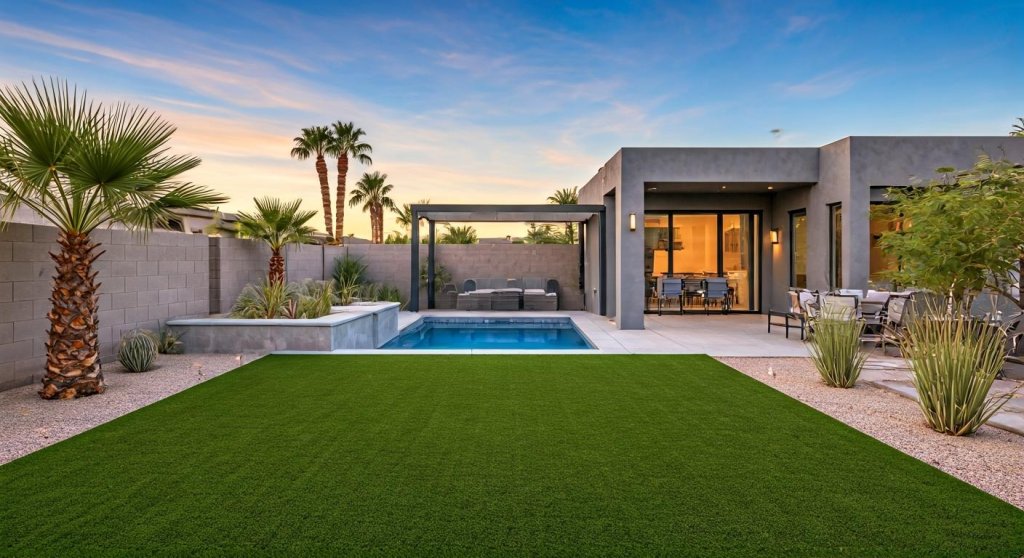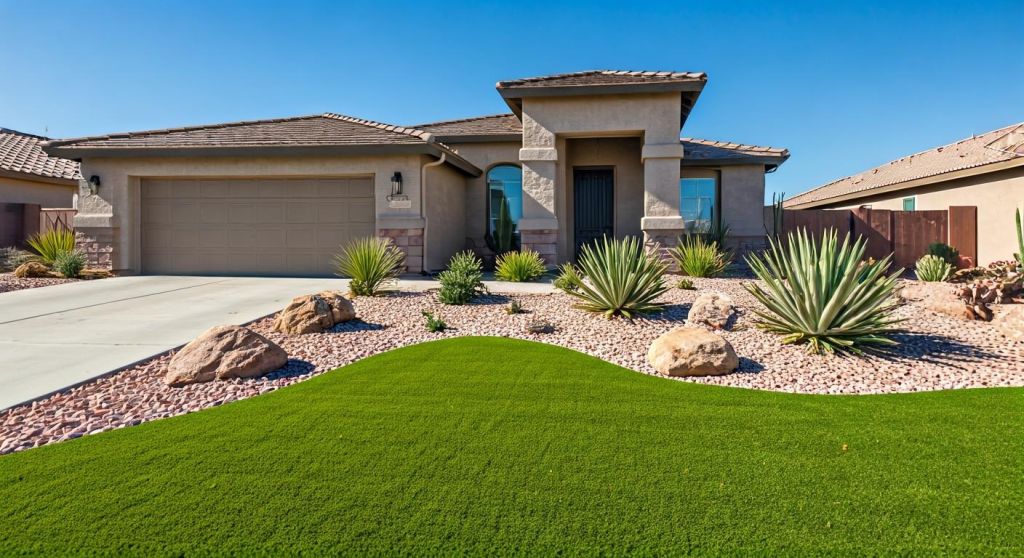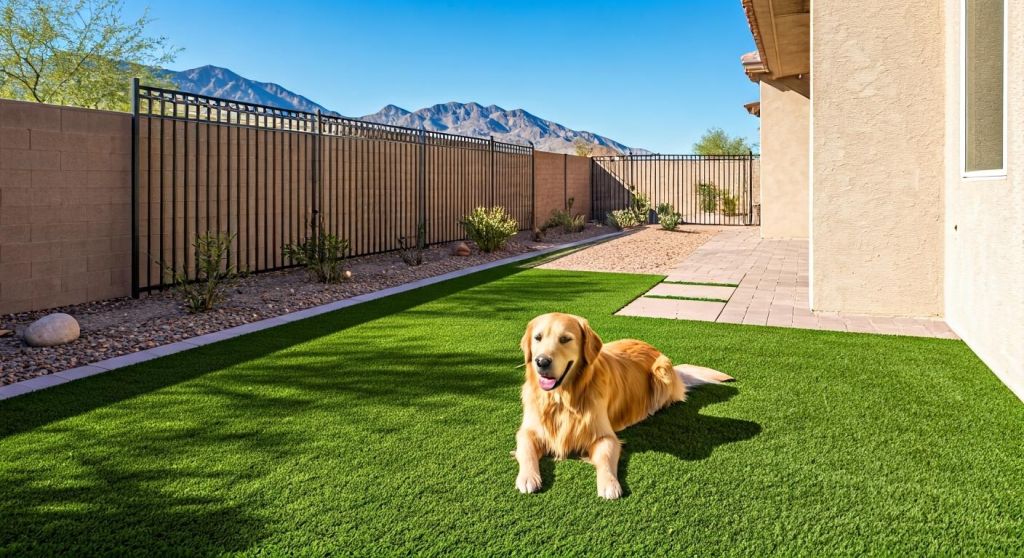Low Maintenance and Durability
When you're considering how to enhance your pool area, artificial grass is definitely something to think about! Quality Artificial Grass Vegas Nevada. One of the most significant advantages is its low maintenance nature. Unlike real grass, which needs regular mowing, watering, and fertilizing, artificial grass just sits there looking pretty with minimal effort. You won't find yourself spending hours pulling weeds or dealing with muddy patches after a rain. Instead, you can spend that time enjoying your pool and relaxing with friends.
Now, let's talk durability. Artificial grass is designed to withstand the elements, so you dont have to worry about it fading or getting damaged easily. Whether its the harsh sun beating down or a sudden downpour, your synthetic lawn will stay lush and vibrant, no matter what. You also wont have to deal with those pesky grass stains on your swimsuit or towels-what a relief!
And, let's not forget about safety. With no mud or uneven surfaces, the risk of slips and falls around your pool decreases significantly. Plus, it's a great way to keep bugs and pests at bay since there's no natural grass to attract them.
In conclusion, if you want a beautiful, hassle-free environment around your pool that can handle the wear and tear of everyday life, artificial grass is a fantastic choice. You'll enjoy all the perks without any of the headaches!

Enhanced Swimming Pool Area Aesthetics
Hey there! So, youre thinking about sprucing up that pool area of yours, huh? Well, have you considered artificial grass? Its not just about making your space look fancy (though thats a huge plus). Think about it, artificial grass can totally revamp the Enhanced Swimming Pool Area Aesthetics, making your outdoor oasis feel like a million bucks without the hassle of real grass maintenance!
You know, one of the coolest things about artificial grass is how it doesnt need watering, mowing, or fertilizing. That means no more dragging the mower around on hot summer days or worrying about your grass turning brown during droughts. Plus, you can enjoy your pool area all year round without the stress of keeping the grass looking neat and tidy!
Not only does artificial grass save you time and effort, but it also adds a touch of sophistication to your pool area. It can come in various colors and textures, so you can match it to your existing decor or even go for a bold look that stands out. Imagine having a lush, green carpet around your pool that doesnt require any upkeep - its like having your own personal paradise!
Of course, some people might argue that real grass has its charm, but the benefits of artificial grass often outweigh the negatives. No more worrying about pests or weeds taking over, and you can even have your pool area looking pristine even when youre not around to take care of it!
So, next time youre contemplating how to enhance the look of your swimming pool area, dont forget about artificial grass. Its a smart choice that can make your outdoor space look stunning while saving you time and effort. Trust me, its worth considering!

Environmental Benefits of Artificial Grass
When youre considering the area around your pool, you might not think about what type of grass to use. But hey, have you ever thought about the environmental benefits of artificial grass? It's not just about looks; it's about making a smart choice for the planet too!
First off, lets talk about water usage. Regular grass needs a ton of water to stay green and lush, especially in the hot summer months. This can really add up, and who wants to waste that precious resource? With artificial grass, you wont have to worry about watering it every day, which means youre saving water! That's a win for the environment and your wallet.
Also, think about the chemicals. Natural grass often requires fertilizers and pesticides to look good. But guess what? These chemicals can wash into the pool, making it unsafe for swimming. With artificial grass, theres no need for these harmful substances (and that's a relief!). You can enjoy a clean, safe swimming environment without the worry of chemical runoff.

Moreover, artificial grass can also help in reducing carbon footprint. You're not mowing the lawn every week, which means less gas used and fewer emissions released into the air. Plus, it doesn't need as much maintenance as real grass, so you're cutting down on the energy used for landscaping. Its a simple choice, but it can have a big impact!
And lets not forget about durability! Artificial grass can withstand wear and tear much better than natural grass. Kids and pets can play around the pool without tearing up the lawn. So, it's not just good for the environment; it's practical too!
In conclusion, thinking about artificial grass around your pool isn't just a trend; it's a smart, eco-friendly decision that benefits both you and the planet. Landscape Lighting With Artificial Turf Las Vegas You'll save water, avoid harmful chemicals, cut down on emissions, and still have a beautiful outdoor space! So, why not give it a shot? You won't regret it!
Cost-Effective Solution for Pool Surroundings
Alright, so youve got this beautiful pool in your backyard, right? And you wanna make it look stunning, but lets be real, who wants to spend a fortune on landscaping! Artificial Grass For Commercial Properties Las Vegas Artificial grass around your pool can be a cost-effective solution for pool surroundings. Sure, it might sound a bit too good to be true, but I swear, its not.
First off, maintenance is way easier with artificial grass. No more mowing or fertilizing, just give it an occasional wash with a hose! That saves you time and money in the long run. Plus, you don't have to worry about those pesky weeds popping up, which can be a huge hassle. It's like having a low-maintenance lawn that never needs attention!
Another thing is, artificial grass doesn't require water to keep it lush and green. In areas where water conservation is a big deal, this can be a huge plus.
Why You Should Think About Artificial Grass Around Your Pool - Synthetic Turf Company Near Las Vegas
- Las Vegas Turf For Event Spaces
- Las Vegas Artificial Grass Cost Estimate
- Las Vegas Turf For Xeriscaping
Now, here's the kicker. Installation costs can be a lot lower than traditional sod. While it might seem pricey at first glance, remember that you're saving on all those ongoing expenses like irrigation and pest control. Over time, it adds up to significant savings!
And don't even get me started on how durable it is. Artificial grass can withstand heavy foot traffic (like when kids are running around after playing in the pool) without getting damaged or worn out. That means no need for repairs or replacements, which is definitely a relief.
But what if you're worried about aesthetics? Don't be! Modern artificial grass looks incredibly realistic. It comes in various shades of green to match the natural grass in your area, making it blend in seamlessly with the rest of your yard. Some even have a texture that mimics real grass, so you won't notice the difference unless you touch it.
Last but not least, artificial grass can provide some insulation around your pool. This means that when the weather gets cold, it helps keep the ground under your pool warmer, potentially reducing your heating costs. It's like having a cozy blanket all year round!
So, if you're looking for a way to improve your pool area without breaking the bank, artificial grass might just be the perfect choice. It's tough, attractive, and above all, cost-effective!








